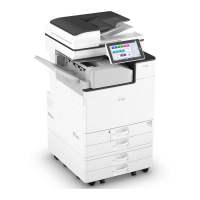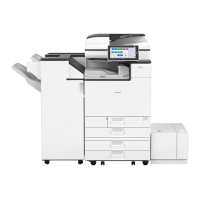• Before loading paper into a tray, check the paper size and type that can be loaded in
the tray, and confirm the paper size that is automatically detected.
page285”Recommended Paper Sizes and Types”
• When loading paper of a size that is not automatically detected, specify the paper
size in [Tray/Paper Settings] of [Settings].
page88”Specifying the Paper Size That Is Not Automatically Detected”
• To load thin paper, thick paper, or other special paper, specify the paper type or
thickness in [Tray/Paper Settings] of [Settings].
See "Tray/Paper Settings", User Guide (HTML).
page92”Specifying Paper Type and Thickness Settings”
• Check the paper setting before printing. If the paper differs from the paper setting, a
mismatch error will occur when you print.
• Straighten curled or warped paper before loading.
• When loading paper on a tray which has a few sheets of paper, multiple sheets of
paper may be fed at once from the tray. Take out all sheets, fan the sheets, and then
load them again.
• If a paper tray is pushed vigorously when putting it back into place, the position of
the tray's side fences may slip out of place.
• When loading a low number of sheets, be sure not to squeeze the side fences in too
tightly. If the side fences are squeezed too tightly against the paper, the edges may
crease, thin paper may wrinkle, or the paper may misfeed.
• You may hear the sound of rubbing paper. This is not a malfunction.
• Do not stack paper over the limit mark.
Loading Paper into Tray 1 to 4
Adjust the side and end fences according to the paper size. When loading paper larger
than A3 or 11 × 17 to tray 2-4, also change the position of the auxiliary side fence.
(mainly Europe and Asia)/ (mainly Taiwan)

